Designing Accessible Fashion for Visually Impaired People
Accessible fashion design for visually impaired individuals combines innovative textile technology with inclusive design principles. From tactile
clothing labels and smart textiles to adaptive fasteners and high-contrast patterns, modern assistive fashion empowers independence while maintaining style and comfort. These details help users dress with ease, recognise garments quickly and feel confident in their choices.
In India, affordable solutions matter. Low-cost options such as tactile labels or easy-to-use closures can be introduced without raising production costs much. At the same time, advanced features like audio sensors or smart fabrics can be explored, but they need to remain durable, washable and practical. What works best is clothing that combines comfort, dignity and functionality.
Evolution of Accessible Fashion and Adaptive Clothing Technology
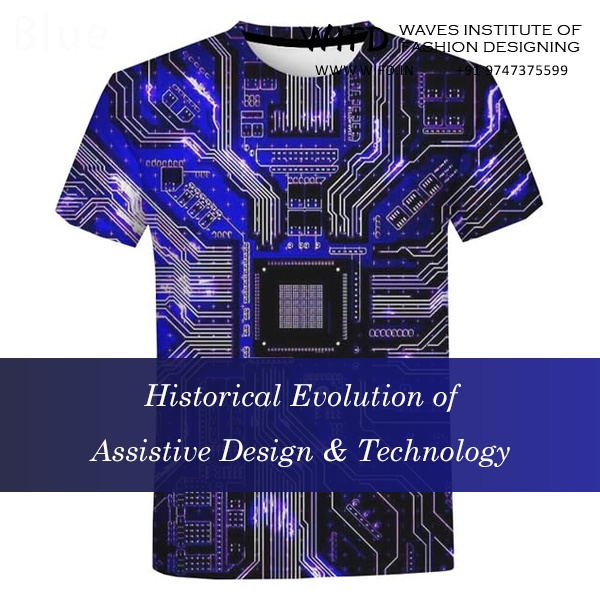
Adaptive
fashion design has transformed from basic Braille clothing tags to sophisticated smart textiles with embedded sensors and haptic feedback systems. Early aids included magnifying lenses and in 1824
Louis Braille introduced his tactile writing system, which gave blind individuals the ability to read and write independently. Embossed books and other tactile methods also added access to knowledge in the 19
th century.
During the 20
th century,
adaptive clothing, talking watches, audio books and improved canes became part of daily life. These designs made dressing, reading and moving around easier. A major breakthrough came with screen readers and later refreshable Braille displays, which opened computers and the internet to visually impaired users. In the 21
st century, Artifical Intellegence and texture recognition systems have gone further, allowing smartphones to identify objects, read printed text aloud and describe surroundings. The journey from simple lenses to digital solutions shows how each stage improved independence and accessibility.
Types of Visual Impairment and their Design Implications
Fashion designers must understand different types of visual impairment to create truly inclusive adaptive clothing that serves diverse needs.
Categories of Visual Impairment
Low Vision (Partial Sight)
- People with low vision can see, but their vision is blurred or limited. They may find it difficult to read small print, recognise faces or see details clearly.
- They depend on clear contrast, larger fonts and proper lighting to function better.
Colour Vision Deficiency (Colour Blindness)
- This affects the ability to distinguish certain colours, most commonly red and green or blue and yellow.
- People with this condition may struggle with colour-based signals, charts or labels.
Total Blindness
- In this case, a person has no vision at all and relies on non-visual cues such as touch, sound and smell for navigation and interaction.
- Designs must focus on tactile features and audio support.
Design Implications for Each Category
| Impairment Type | Design Needs | Examples in Daily Use |
|---|
| Low Vision | Strong contrast, larger text, good lighting | Bold white letters on dark boards in public places |
| Colour Vision Deficiency | Avoid relying only on colour; use patterns, labels or symbols | Traffic lights supported by position (top, middle, bottom) |
| Total Blindness | Tactile textures, raised markings, sound-based cues | Braille labels, talking lifts, textured floor paths |
Key Areas to Focus in Design
- Contrast Sensitivity - Use strong colour contrast, such as black on white or yellow on dark blue, to make information easier to see.
- Colour Detection - Combine colour with shapes or text to ensure people with colour vision deficiency can still understand instructions.
- Texture Perception - Raised textures, grooves or bumps help in identifying surfaces and guiding movement.
- Lighting - Provide even, glare-free lighting. Adjustable brightness helps those with partial sight.
- Signage and Labelling - Use large fonts, Braille, tactile markings and clear contrast. Labels on medicines, food packets and switches must be easy to identify.
- Fasteners and Controls - Use differently shaped buttons, zips or switches so they can be recognised by touch.
- Navigation - Install tactile paving on footpaths, audio announcements in buses and trains and clear floor layouts to support movement.
Essential Adaptive Fashion Design Principles for Accessibility
Designing for visually impaired people needs thoughtful choices that make everyday use simple, safe and comfortable. Certain design principles help create products that are functional and inclusive.
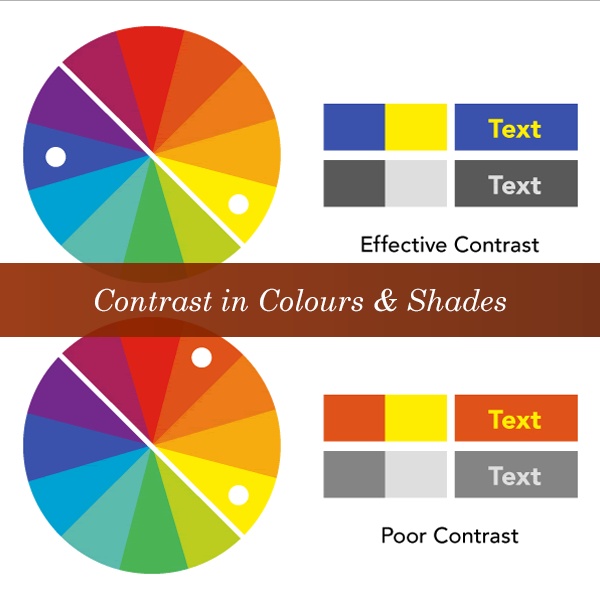
Contrast in Colours and Shades
High-contrast
fashion design improves garment identification through strategic color placement, making adaptive clothing more functional for partial vision users. Using bold, saturated colours also improves recognition. In clothing and accessories, contrast stitching or trims can guide the wearer in finding pockets, zips or seams.
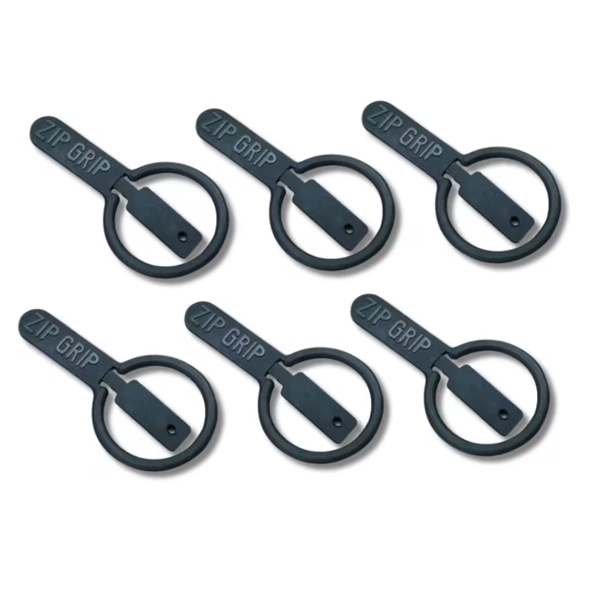
Texture and Tactile Elements
Touch often replaces sight as the first way to understand an object. Designers can use textured fabrics, raised surfaces or tactile markers to guide the user. For example, a raised dot on one side of a
shirt collar can show which side is left. Similarly, textured grips on handles or zips help users operate them without confusion.
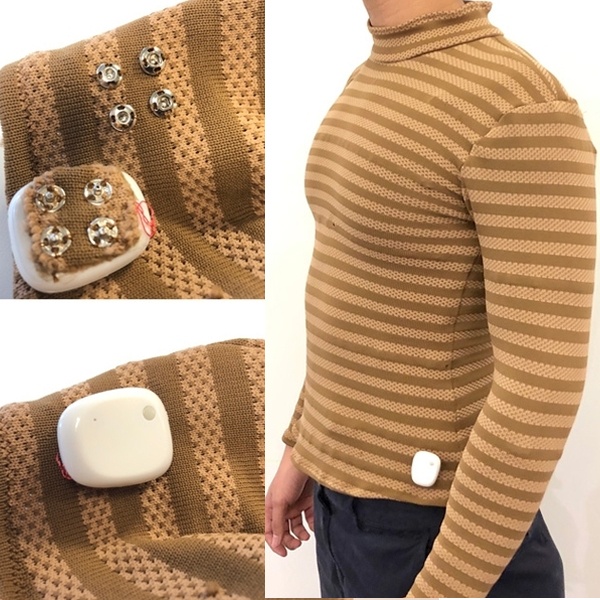
Multi-sensory Cues
Products that combine sound, touch and even scent support independent use. Audio signals, vibration feedback or soft beeps can confirm an action, such as a lock closing. In clothing, small haptic tags or scented markers can help users sort garments quickly. The aim is to give clear signals that go beyond sight.

Simple and Easy Closures
Fastening clothes or accessories should not feel like a struggle. Large buttons, magnetic snaps, hook and loop tapes and easy-pull zips save time and effort. Smooth mechanisms also prevent accidental pinches or snags.
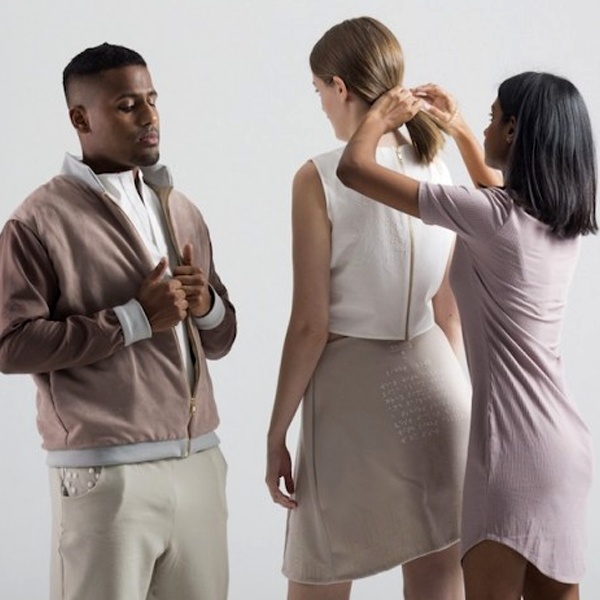
Fit, Comfort and Safety
A good design always respects the body. Clothes should fit well, without tightness or loose parts that may cause tripping. Soft fabrics, flat seams and cushioned edges improve comfort during long wear. Safety is equally important, so designers avoid sharp corners, rough surfaces or fragile materials that break easily.

Durability and Ergonomics
Everyday products should last long with regular use. Strong stitching, sturdy fabrics and reinforced closures prevent quick wear and tear. Ergonomic design ensures the product feels natural in the hand or on the body, reducing strain and making it easier to handle.
Smart Textiles and Wearable Technology in Adaptive Fashion
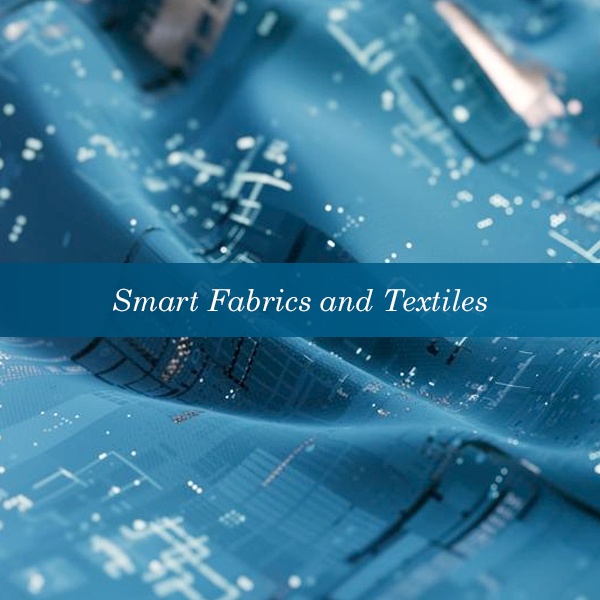
Smart Fabrics and Textiles
Smart fabric technology revolutionizes adaptive clothing through conductive textiles and embedded sensors.
smart textiles use conductive threads that can carry signals, like tiny wires woven into cloth. Washable sensors can be stitched directly into shirts or jackets, making them durable for regular use. These fabrics allow clothes to sense touch, pressure or even temperature without looking different from normal clothing.
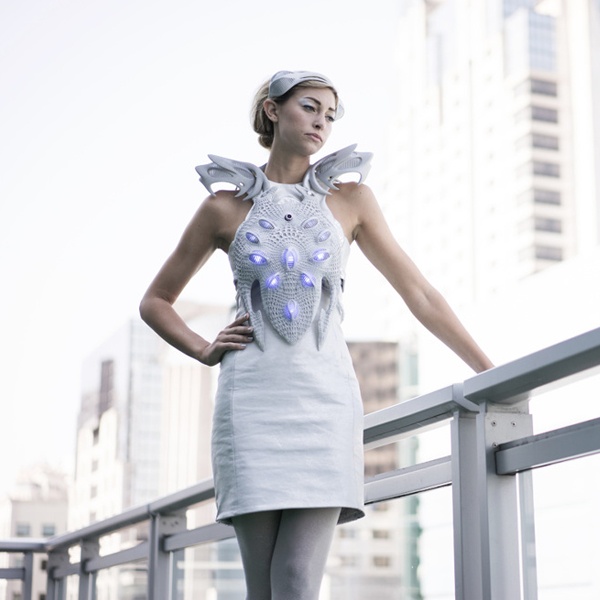
Embedded Electronics
Clothing and accessories can include small electronic components without adding bulk. Microcontrollers act like mini computers inside garments, processing signals from sensors. For example, colour sensors help a person know whether their shirt is blue or green. Proximity sensors can alert someone if an object is too close. Pattern recognition modules can detect shapes and translate them into audio or vibration signals, helping with navigation or outfit matching.
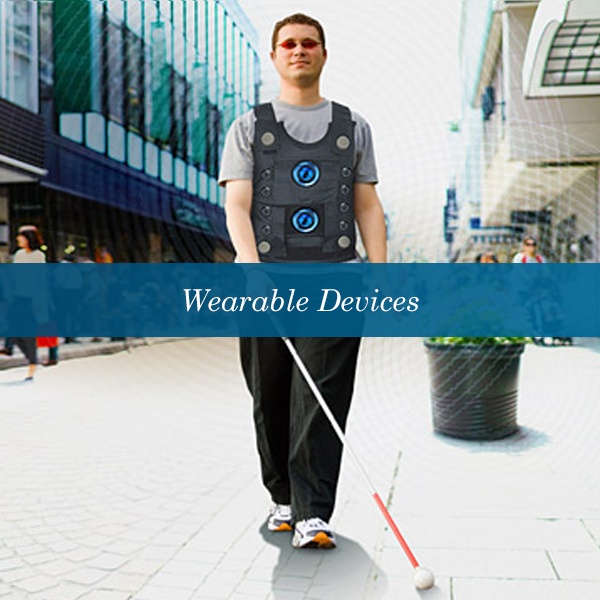
Wearable Devices
Many assistive tools now come in wearable forms.
- Smart shirts can monitor body posture or give vibration feedback.
- Smart glasses can read text aloud or identify faces.
- Smart canes with ultrasonic sensors can detect obstacles at different heights.
- Haptic wearables, such as wristbands or belts, use gentle vibrations to guide directions or signal warnings.
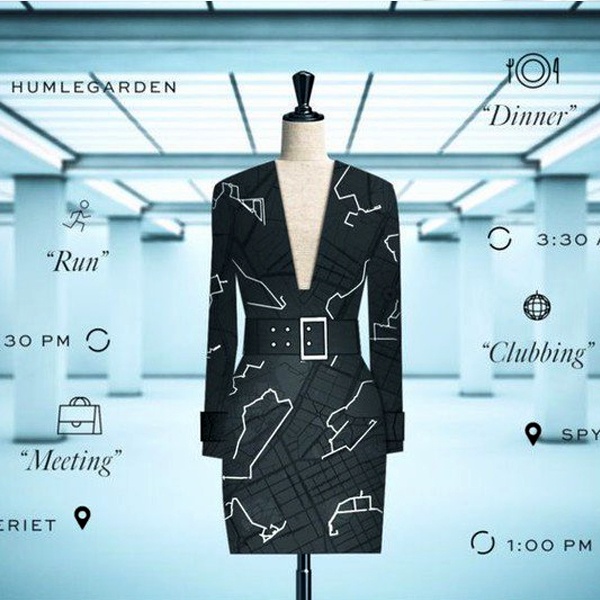
Low-tech vs High-tech Choices
Not every solution needs advanced electronics. Low-tech designs like tactile buttons, textured tags or raised patterns on clothing offer affordable support. High-tech products with sensors and microcontrollers provide greater independence but often cost more. For example, a simple textured label might cost a few rupees, while a smart cane can go beyond Rs. 3,000 to Rs. 5,000/-.
Challenges in Accessible Fashion Design and Manufacturing
- Cost and Affordability - Many assistive products come with advanced technology, but high prices keep them out of reach for most people in India. A talking smartwatch or a navigation cane may cost Rs. 15,000 to Rs. 30,000, which is far above the budget of an average household. Designers must think about affordable production methods and scalable models so that these tools reach more people, not just the privileged few.
- Practical Usability - Daily use products must be durable and washable. Clothes with tactile markers should survive regular washing. Wearables must be lightweight, comfortable and have long battery life. A device that needs charging every few hours will not suit a student or a working professional. Cutting costs by using poor quality material makes the product less reliable, so finding the right balance is crucial.
- Aesthetics v/s Function - A person should never feel that assistive products make them stand out in an uncomfortable way. A smart walking stick, for example, must look like a regular stick while still carrying sensors. The challenge lies in blending fashion sensibility with utility so that users feel confident and included, not labelled by their aids.
- Adoption and Social Barriers - Even when good products exist, many hesitate to use them because of stigma. Some fear looking dependent or different in public. Designers must involve visually impaired users in the design process to ensure products feel inclusive and respectful. This builds trust and encourages wider adoption.
- Privacy and Data Protection - Technology-enabled wearables often collect location or health data. Without strong safeguards, this information can be misused. Designers must ensure that users know what data is being collected and give clear consent. Security and privacy should never be sacrificed for convenience.
Design Process: From Concept to Prototype to User Feedback
The journey starts with research and ends with a usable product that improves daily life...
- Research and Needs Assessment - The first step is to understand what visually impaired people actually require. Designers talk to individuals, visit schools or community centres and observe how they manage daily activities. This helps to note the challenges they face with mobility, communication or accessing information. In India, for example, many depend on tactile signs or voice-assisted tools, so collecting local insights is very important.
- Ideation and Sketching - Once the needs are clear, the design team begins ideation. They sketch ideas that solve practical problems while also thinking about comfort and usability. Both form and function matter. For instance, a mobility aid should not only guide the user safely but also feel easy to hold and carry.
- Prototyping and Material Choice - The next stage is to create a working model. Designers select suitable materials, electronics or fabrics depending on the product. Lightweight metals, durable plastics or textured fabrics often work well because they balance strength with ease of use. Prototyping may involve simple 3D models, electronic circuits or hand-made samples that represent the real product.
- User Testing and Feedback - After the prototype is ready, it is tested by visually impaired users in real environments. Usability testing shows how people actually interact with the product. Feedback highlights what works and what creates difficulty. For example, a voice-guided device might sound too fast or a tactile button may need a different shape for easier recognition.
- Refinement and Iteration - Based on the feedback, the design is refined. This may mean changing the material, adjusting the size or improving the electronics. The process repeats until the product feels natural, safe and efficient for daily use. Iteration ensures that the final design is not based on assumptions but on real experiences shared by the visually impaired community.
Practical Tips and Guidelines for Designers and Fashion Students
Designing for visually impaired people needs a mix of creativity, empathy and practicality. These adaptive fashion design techniques help create inclusive clothing that meets accessibility standards:
Key Features to Include
- Tactile cues: Add textures, raised patterns or stitched lines that help the wearer identify parts of the garment, like the front, back or pockets.
- High contrast: Use strong colour contrasts to make clothing easier to recognise for people with partial vision. For example, black buttons on a white shirt.
- Bold fonts: For labels, size tags or care instructions, choose large and bold letters. Avoid decorative fonts.
- Simple closures: Velcro, magnets or large buttons are easier to handle compared to hooks or tiny zips.
Low-cost Adaptations
Many changes do not need big budgets. Small adjustments can make a big difference:
- Tactile tags stitched inside to help identify size or washing side.
- Use of different textures like cotton mixed with denim to differentiate items.
- Colour-coding using affordable fabric dyes.
- Clear and bold printed care instructions in both text and Braille stickers.
Collaborating with Tech Partners
Designers can work closely with:
- Engineers for wearable tech like sensors or audio cues.
- UX designers for creating easy-to-use clothing guides or apps.
- Material scientists for fabrics that are lightweight, durable and safe for skin.
This teamwork ensures your ideas turn into practical solutions.
Sourcing and Manufacturing
- Choose suppliers who can provide fabrics with consistent texture and quality.
- Work with manufacturers who understand special stitching needs, like raised seams.
- Always request samples before bulk production to avoid errors.
Budgeting and Maintenance
- Plan a small portion of the budget for assistive features like tactile labels or Braille tags. In India, adding a Braille sticker may cost as little as Rs. 2 per piece, but it adds huge value.
- Think long term. Clothes should be easy to wash and durable so that users do not face high maintenance costs.
- Keep designs practical and affordable without compromising comfort.
By following these guidelines, designers and students can create clothing that not only looks good but also improves independence and confidence for visually impaired people.
To make fashion truly inclusive, accessibility has to be part of the design process right from the start. Simple details like tactile tags, readable labels or user-friendly closures can transform a regular garment into something that feels empowering. When these features are tested directly with visually impaired users, the results are more practical and reliable.
For Indian designers and brands, starting small is the key. Add one or two inclusive features to your next collection, test them with real users and refine them based on feedback. This approach keeps costs manageable while creating fashion that is meaningful, market-ready and inclusive for people with visual impairments.
FAQ about Design & Development for Visually Impaired Persons
1. Are there government schemes in India for assistive fashion items?
Yes. The ADIP scheme gives aids and devices at low cost or free. You need a disability certificate or UDID card to apply.
2. How can someone get a disability certificate or UDID card?
Register on the UDID portal, visit an authorised hospital for check-up and then get the card after approval.
3. Which Braille system is used in India for clothing labels?
India uses Bharati Braille for most languages. Designers should follow this for labels.
4. Where can Braille labels or embossers be found in India?
They are sold by assistive device shops and braille presses. Some NGO's and government presses also provide them.
5. Are there Indian brands making adaptive clothing?
Yes. Startups like 6 Dots, Haxor and Cur8ability make inclusive clothes.
6. How can designers test products with visually impaired people?
Work with groups like the National Association for the Blind or local NGO's. They help connect with users.
7. Where can students learn inclusive design in India?
Institutes like NID offer courses. Online platforms like NPTEL also have modules.
8. Do Indian laws ask for accessible products?
Yes. The RPwD Act 2016 and the Accessible India Campaign guide
businesses to follow accessibility rules.
9. How can online shops in India be made easy for screen readers?
Use alt text for images, simple fonts, clear product details and easy checkout steps.
10. How can small tailors get funds to make adaptive clothes?
They can apply through ADIP camps, contact NGO's or use CSR funding from companies.
11. How to make Braille or tactile labels last after washing?
Test them with several washes, use strong threads, tight stitching or metal plates for better durability.

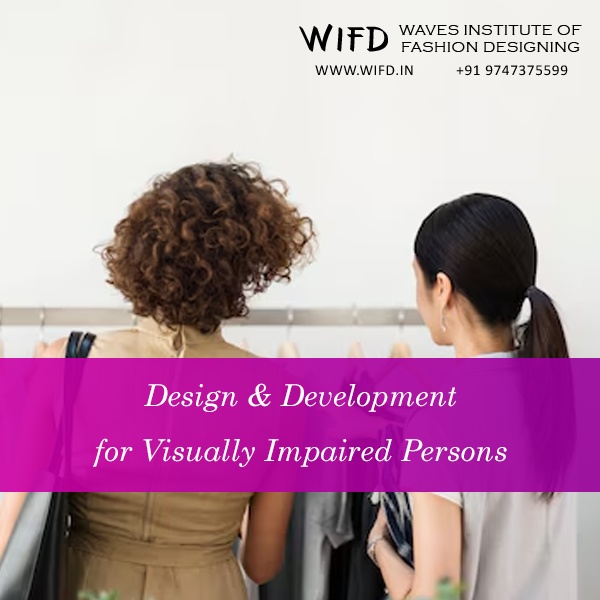











 CONTACT USWaves Institute of Fashion Designing,
CONTACT USWaves Institute of Fashion Designing,